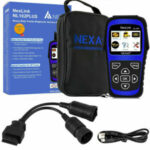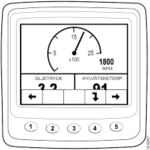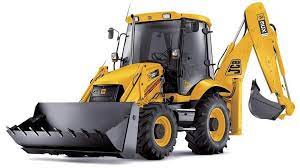Service technicians have no problem recognising breakdowns and carrying out machine diagnostics, IVECO Bus Fault Codes List, plus they are familiar with equipment from a variety of manufacturers.
 IVECO Bus (formerly Irisbus) is a bus manufacturer with headquarters in Turin. IVECO Bus is now only a brand division of IVECO which is a company incorporated under Italian law and listed on Borsa Italiana. The French-Italian company was created in January 1999 by the merger of the coach and bus divisions of Renault Véhicules Industriels and the bus and coach divisions of Fiat Industrial and IVECO with Ikarus Bus added in late 1999. The Ikarus Bus division was sold off in 2006 to Hungary’s Műszertechnika Group acquiring the property of Heuliez and Karosa which was transformed in Iveco Czech Republic in 2007.
IVECO Bus (formerly Irisbus) is a bus manufacturer with headquarters in Turin. IVECO Bus is now only a brand division of IVECO which is a company incorporated under Italian law and listed on Borsa Italiana. The French-Italian company was created in January 1999 by the merger of the coach and bus divisions of Renault Véhicules Industriels and the bus and coach divisions of Fiat Industrial and IVECO with Ikarus Bus added in late 1999. The Ikarus Bus division was sold off in 2006 to Hungary’s Műszertechnika Group acquiring the property of Heuliez and Karosa which was transformed in Iveco Czech Republic in 2007.
IVECO Bus Error Codes
1.1 On The bus speed signal has exceeded the maximum or minimum limit (a short circuit of the wiring is possible). The tachograph does not work (if there is a fault between the sensor and the tachograph). Cruise Control does not work (only for a motor with a single-stage overpressure valve). Measurement parameters with the diagnostic tool: in the event of this malfunction, the speed in the control unit remains constant at a value of 5 km / h. Reading the fault memory of the control system: if the fault is occasional, check that the connectors are not fixed. If the fault is actual, carry out the following checks: a). if the tachograph does not operate, monitor the electrical wiring and connectors between the sensor and the tachograph; b). if the tachograph is working, check the correct installation, cleanliness and working clearance of the sensor. If the fault persists, monitor the electrical wiring and connectors between the sensor and the control unit (pin B74) through the bushing B, pin 13. The fault is recorded only when the bus moves and only if the circuit is shorted. If no signal is received, then the control unit does not record any fault and “believes” that the bus is standing.
1.2 Not used
1.3 On (single-stage valve) does not light (for a two-stage valve) Invalid signal from the buttons of the Cruise Control function. The side drive and the idling speed setting are not valid. Status parameters with the diagnostic tool: monitor the signals from individual switches . Control the resistance of the multimeter directly on the connector of the lever switch at the switch causing the fault. If the button is OK, monitor the cable between the connector of the lever switch and the control unit (terminal B61) through the bushing E, terminal 32 for the switch SET-, between the connector of the lever switch and the control unit (terminal B79) through the bushing E, terminal 34 for the switch SET +, between the connector of the lever switch and the control unit (terminal B59) through the bushing E, terminal 33 for the RESUME switch and between the connector of the lever switch and the control unit (terminal B60) through the bushing E, pin 31 for the switch OFF. The unreliability of the signal is recorded if the signal comes simultaneously from the switches SET and SET + or from the switches RESUME and OFF.
1.4. Short circuit on the potentiometer of the fuel feed pedal. Decreased power. With the fuel feed pedal free, the idle speed reaches its highest value (about 1100 rpm). When the fuel pedal is depressed, the engine speedily and uncontrollably increases the speed (approximately 2600 rpm) .Measurements with the diagnostic tool: confirm the correct function of the potentiometer between 0% and 100%. If it is not reached reading the parameters to confirm the correct functioning of the potentiometer, measure the multimeter with its intactness (R and 1.0 kΩ between terminals 2 and 3 of the pedal connector); to control the linear change of resistance, depending on the depression of the pedal between the extreme positions between the terminals 1 – 3 and the terminals 2 – 3 of the pedal connector. If the potentiometer is OK, monitor the cables between the pedal connector, pin 1 and the control unit (pin B83) through the bushing B, terminal 36, between the pedal connector, pin 2 and the control unit (pin B55) through bushing B, terminal 35 and between the pedal connector, the terminal 3 and the control unit (output B81) through the bushing B, terminal 34.
1.4 Lit The loss of the signal from the potentiometer of the accelerator pedal (an open circuit is possible). Decreased power. The idling speed is increased at any position of the fuel delivery pedal (approx. 1100 rpm) .Measurement parameters with the diagnostic tool: confirm the correct functioning of the potentiometer between 0% and 100%. If it is not reached reading the parameters to confirm the correct functioning of the potentiometer, measure the multimeter with its intactness (R and 1.0 kΩ between terminals 2 and 3 of the pedal connector); to control the linear change of resistance, depending on the depression of the pedal between the extreme positions between the terminals 1 – 3 and the terminals 2 – 3 of the pedal connector. If the potentiometer is OK, monitor the cables between the pedal connector, pin 1 and the control unit (pin B83) through the bushing B, terminal 36, between the pedal connector, pin 2 and the control unit (pin B55) through bushing B, terminal 35 and between the pedal connector, the terminal 3 and the control unit (output B81) through the bushing B, terminal 34.
1.5 lit (single-stage valve) is not lit (in the case of a two-stage valve) Clutch switch: ineligible Crisis Control signal / side drive is not working. Status parameters using the diagnostic tool: confirm the correct operation of the switch. Check the LED test lamp under the plastic protective cover (with the free clutch pedal, the test lamp should be on). If the sensor is in order and correctly laid, check the electrical wiring, connectors and the correct adjustment of the sensor (distance from the pedal: 1 3 mm). If no signal is received to depress the pedal, the control unit does not notify the cause and considers this condition to be normal. Cruise Control does not work because the control unit “believes” that the pedal is constantly depressed. ATTENTION: make sure the cable is routed so that it does not come to its compression and damage when the clutch pedal is depressed.
1.6 lights Brake switches: unreliable signals between the primary and secondary switch. Brake lights must not light up. Cruise Control does not work. The status parameters with the diagnostic tool: confirm the correct and timely activation of both brake switches. With a multimeter, check the short circuit on the connector of the switches. If the switches are not damaged, check the cables between the switch connector, pin 4 and the control unit (pin B76) and between the switch connector, pin 2 and the control unit (pin B80) via IBC and bushing B, pin 31.
1.7 does not illuminate Unreliable signals between the brake pedal and the fuel pedal or the simultaneous pressing of both pedals. The engine is lowered to the idling limit. Status parameters using the diagnostic tool: check the signal from the potentiometer after releasing the accelerator pedal. It is possible that the driver could also press both pedals at the same time. If the brake pedal is depressed simultaneously with the fuel pedal, the engine speed decreases, while holding the fuel pedal at the idle speed limit so that it is possible to stop the bus, even though the feed pedal fuel is locked in the pressed position (safety mode). In spite of this, it is allowed to “gas” with the brake pedal depressed without the safety mode.
1.8 not illuminated Defective control lamp on the optical panel. Power reduction (only for a motor with a single-stage overpressure valve). The indicator lamp never lights up after the ignition key is turned on or remains lit after the ignition key is turned off. Active diagnostics using the diagnostic tool. If the test lamp does not work during active diagnostics, check the bulb’s integrity between terminals 12 and 13 of the module. If the light bulb is OK, check the cable between the light bulb terminal 12 and the control unit (pin B28) through the bushing B, pin 7 and between the bulb terminal 13 and the control unit (pin B28) through the bushing B, pin 8. The correct operation of the test lamp is a vital view to the problem-free functioning of the system. Explain to the user the procedure for correctly confirming the activity of the warning lamp (if the system does not have a malfunction, after turning on the key, the test lamp should light up for about 2 seconds, then go out).
1.9 On (single-stage valve) does not light (for a two-stage valve) Motor (exhaust) selector: an unreliable signal or loss of interconnection, depending on the control of the motor brake. The exhaust brake is activated only after the pedal is depressed on the floor of the cab or after pressing the pedal will not turn on and can only be operated in the next two selector positions. Status parameters using the diagnostic tool: check the signal from the engine brake switch. If the signal does not come from the selector to the control unit, check with the multimeter that the selector switch is correctly connected between terminals 6 and 8 of the connector. If the selector is OK, check the cables between the selector connector, terminal 6 and the control unit (output B38) through the bushing E, terminal 36 and between the selector connector, the terminal 8 and the control unit (output B22) through the bushing E, terminal 35.
2.1 lit Coolant temperature sensor: short circuit in positive connection line, short circuit to ground or open circuit. Arrow of temperature indicator in limit position, the indicator light is on. Measuring parameters with diagnostic tool: in case of this fault, the temperature read in the parameters is half than the temperature of the engine oil. Check with a multimeter for sensor intactness between terminals 1 and 2 (at a temperature of 20 ° C, the resistance is approximately 2.5 kΩ). If the sensor is in order to monitor the cables between the sensor, pin 1 and the control unit (pin C18) and between the sensor, pin 2 and the control unit (pin C36).
2.2 lit The air temperature sensor on the intake side of the motor: short circuit in positive connection line, short to earth or open circuit. No detectable change by the bus driver. Measuring parameters with diagnostic tool: in case of this fault, the temperature read in the parameters is unchanged at 30 ° C. If the air temperature remains unchanged at 30 ° C, check with a multimeter that the sensor is intact between terminals 1 and 2 (at a temperature of 20 ° C, the resistance is approximately 2.5 kΩ). If the sensor is in order to monitor the cables between the sensor, pin 1 and the control unit (pin C21) and between the sensor, pin 2 and the control unit (pin C29).
2.3 lit Fuel temperature sensor: short circuit in positive connection line, short circuit to ground or open circuit. No detectable change by bus driver. Measuring parameters with diagnostic tool: in case of this fault the temperature read in the parameters is unchanged at 20 ° C . Check with a multimeter for sensor intactness between terminals 1 and 2 (at a temperature of 20 ° C, the resistance is approximately 2.5 kΩ). If the sensor is in order to monitor the cables between the sensor, pin 1 and the control unit (pin C17) and between the sensor, pin 2 and the control unit (pin C34).
2.4 flashing The engine intake air pressure sensor: a short circuit in the positive connection line, a short to ground or an open circuit or supply current has exceeded the maximum / minimum value. There is no recognizable change by the bus driver. Power reduction (only for a motor with a single-stage overpressure valve). Measurement parameters with the diagnostic tool: in the event of this fault, the pressure read in the parameters is unchanged at a value of 1600 bar. Check the cables between the sensor, terminal 3 and the control unit (terminal C10) and between the sensor, pin 4 and the control unit (terminal C28). The air pressure sensor is an integral part with an air temperature sensor. If the electrical part of the sensor connection is OK, check the proper operation of the turbocharger WASTEGATE discharge valve.
2.5 not lit Atmospheric pressure sensor (installed in the control unit): short circuit in the positive connection line, short to earth or open circuit. No detectable change by the bus driver. Measurement parameters with the diagnostic tool: in case of this fault, the pressure read in the parameters is unchanged at a value of 970 bar. Contact the Help Desk and follow their instructions if there is a possible replacement of the control system. The sensor is installed in the control unit and is not replaced separately. The possible painting of the engine / control unit can cause poor atmospheric pressure measurements.
2.6 lit Engine oil pressure sensor: short circuit in positive connection line, short to earth or open circuit. Arrow of temperature indicator in limit position, the indicator light is on. Power reduction (only for a motor with a single-stage overpressure valve). Measurement parameters with the diagnostic tool: in the event of this fault, the pressure read in the parameters is unchanged at a value of 60 bar. Check the cables between the sensor, terminal 3 and the control unit (terminal C9) and between the sensor, pin 4 and the control unit (terminal C35). The engine oil pressure sensor is an integral part with the engine oil temperature sensor.
2.7 lit Engine oil temperature sensor: short circuit in positive connection line, short to earth or open circuit. No detectable change by bus driver. Measurement parameters with diagnostic tool: in case of this fault, the temperature read in the parameters is fixed at 120 ° FROM. Check with a multimeter for sensor intactness between terminals 1 and 2 (at a temperature of 20 ° C, the resistance is approximately 2.5 kΩ). If the sensor is in order to monitor the cables between the sensor, pin 1 and the control unit (pin C19) and between the sensor, pin 2 and the control unit (pin C33). If the engine oil temperature is too low, the engine speed is limited to the temperature ). The engine oil temperature sensor is an integral part with the engine oil pressure sensor.
2.8 the fuel preheating relay in the fuel filter is off). Heating is always on. The batteries are discharged. b). Heating can not be turned on. Possible clogging of the fuel filter due to the separation of paraffin from the fuel at T <-15 ° C. Active diagnostics using a diagnostic tool. Check the cables between the relay terminal 85 and the control unit (output B2) through the bushing E, terminal 38 and between the relay terminal 86 and the control unit (terminal B36) through the bushing E, terminal 29.a). Failure of 2.3 can be registered because the fuel is too hot.
2.9 The incandescent relay is hot). Resistance of glow without power. Perhaps the wrong cold start of the engine and increased smoke when starting the engine. b). The resistance of the glow is constantly under tension. Possible damage to the heat resistance and rapid discharge of batteries. Active diagnostics using a diagnostic tool. Check the cables between the relay terminal 85 and the control unit (terminal B4) and between the relay terminal 86 and the control unit (terminal B20).
3.7 On (single-stage valve) does not light (for a two-stage valve) Inadequate supply voltage on the batteries (too low). The idling speed increases depending on the voltage to 200 rpm. above the normal value. Power reduction (only for a motor with a single-stage overpressure valve). Measurement parameters with the diagnostic tool: determine the voltage on the batteries. Carry out the appropriate checks of the voltage regulator, batteries and the power circuit. The voltage of the batteries at the time of verification should not be too low or be recorded by the control unit as unreliable.
3.8 does not illuminate Control lamp-incandescent: short circuit to mass. A). The control lamp of incandescence-burning constantly burns. b). The indicator lamp for incandescence does not light up. Active diagnostics with the diagnostic tool. If the test lamp does not work during active diagnostics, check the bulb’s integrity at the terminals of module 14. If the light bulb is OK, check the cable between the light bulb terminal 14 and the control unit (pin B46) through the bushing B, pin 19. There may be an incorrect cold start of the engine, since the glow is working and the test lamp does not light up.
3.9. The control lamp of incandescence-burning. Perhaps increased smoke when starting the engine. Check that the cables are well connected to the heat resistance terminals. Check for undamaged thermal resistance (R and 0.5 Ohm). Check the cable and the connection between the resistance and the heat relay, terminal 87. Check the grounding cable for the heating resistance. The control unit does not receive a signal from the air temperature sensor that the temperature in the suction receiver is increasing, depending on the supply of the heating resistance.
4.6. Motor brake solenoid valve: short circuit in positive connection line, short circuit to ground or open circuit. Motor brake does not work or is permanently activated after the limit is exceeded 1000 rpm. Active diagnostics with the diagnostic tool. Status parameters using the diagnostic tool: check the control of the motor brake. Check that the solenoid valve is intact (R and 35 Ω). If the solenoid valve is OK, check the cables between the solenoid valve connector, pin 1 and the control unit (pin B4) and between the solenoid valve connector, pin 2 and the control unit (pin B11).
5.1 lit. Electric part of injector of cylinder No. 1: short to ground or open circuit. The motor runs on 3 (5) cylinders. Check that the fixing nuts of the electromagnetic injector cables are properly tightened to 1.5 Nm. Check the intactness and resistance of the solenoid valve (R and 0.5 ohms). If the solenoid valve is OK, check the cables in the head between terminals 3 and 4 of the connector and the injector. If the cable in the head is OK, check the cable between the head connector, pin 3 and the control unit (pin A13) and the cable between the head connector, pin 4 and the control unit (pin A9). It is also possible that the motor will run for 2 (3) cylinder, because the nozzles are controlled by two feeding branches. In this case, the control unit can also register a fault 5.7.
5.2. The electrical part of the cylinder 2 injector: a short to ground or an open circuit. The motor runs on 3 (5) cylinders. Check that the fixing nuts of the electromagnetic injector cables are properly tightened to 1.5 Nm. Check the intactness and resistance of the solenoid valve (R and 0.5 ohms). If the solenoid valve is OK, check the cables in the head between terminals 1 and 2 of the connector and the injector. If the cable in the head is OK, check the cable between the head connector, pin 1 and the control unit (pin A3) and the cable between the head connector, pin 2 and the control unit (pin A6). It is also possible that the motor will run for 2 (3) cylinder, because the nozzles are controlled by two feeding branches. In this case, the control unit can register a fault 5.7 (for six-cylinder engines) or 5.8 (for four-cylinder engines).
5.3 lit Cylinder No.3 injector electrical part: short to ground or open circuit. The motor runs on 3 (5) cylinders. Check that the fastening nuts of the electromagnetic injector cables are properly tightened to 1.5 Nm. Check the intactness and resistance of the solenoid valve (R and 0.5 ohms). If the solenoid valve is OK, check the cables in the head between terminals 3 and 4 of the connector and the injector. If the cable in the head is OK, check the cable between the head connector, pin 3 and the control unit (pin A12) and the cable between the head connector, pin 4 and the control unit (pin A4). It is also possible that the engine will run for 2 (3) cylinder, because the nozzles are controlled by two feeding branches. In this case, the control unit can register a fault 5.7 (for six-cylinder engines) or 5.8 (for four-cylinder engines).
5.4. The electrical part of the cylinder 4 injector: a short to ground or an open circuit. The motor runs on 3 (5) cylinders. Check that the fixing nuts of the electromagnetic injector cables are properly tightened to 1.5 Nm. Check the intactness and resistance of the solenoid valve (R and 0.5 ohms). If the solenoid valve is OK, check the cables in the head between terminals 1 and 2 of the connector and the injector. If the cable in the head is OK, check the cable between the head connector, pin 1 and the control unit (pin A5) and the cable between the head connector, pin 2 and the control unit (pin A14). It is also possible that the motor will run for 2 (3) cylinder, because the nozzles are controlled by two feeding branches. In this case, the control unit can register a fault 5.7 (for six-cylinder engines) or 5.8 (for four-cylinder engines).
5.5 lit Cylinder 5 injector electrical part: short to ground or open circuit. The motor operates on 3 (5) cylinders. Check that the mounting nuts of the electromagnetic injector cables are properly tightened to 1.5 Nm. Check the intactness and resistance of the solenoid valve (R and 0.5 ohms). If the solenoid valve is OK, check the cables in the head between terminals 3 and 4 of the connector and the injector. If the cable in the head is OK, check the cable between the head connector, pin 3 and the control unit (pin A16) and the cable between the head connector, pin 4 and the control unit (pin A11). It is also possible that the motor will run for 2 (3) cylinder, because the nozzles are controlled by two feeding branches. In this case, the control unit can also register a fault 5.8.
5.6 Lit The electrical part of the injector of cylinder No. 6: short to earth or open circuit. The motor runs on 3 (5) cylinders. Check that the fixing nuts of the electromagnetic injector cables are properly tightened to 1.5 Nm. Check the intactness and resistance of the solenoid valve (R and 0.5 ohms). If the solenoid valve is OK, check the cables in the head between terminals 1 and 2 of the connector and the injector. If the cable in the head is OK, check the cable between the head connector, pin 1 and the control unit (pin A10) and the cable between the head connector, pin 2 and the control unit (pin A15). It is also possible that the motor will run for 2 (3) cylinder, because the nozzles are controlled by two feeding branches. In this case, the control unit can also register a fault 5.8.
5.7 Cylinder 1-4 injector (four-cylinder engine) or 1-2-3 (six-cylinder engine) is on. The engine is running on 2 (3) cylinders. Announce the memory of the control unit and try restarting the engine. If this malfunction persists, and only after excluding the possibility of a faulty injector (see 5.X), contact the Help Desk and follow their instructions if there is a possible replacement of the control system.
5.8 Cylinder 2-3 (four-cylinder engine) or 4-5-6 (six-cylinder engine) power control. The engine runs on 2 (3) cylinders. Announce the memory of the control unit and try restarting the engine. If this malfunction persists, and only after excluding the possibility of a faulty injector (see 5.X), contact the Help Desk and follow their instructions if there is a possible replacement of the control system.
6.1 On The crankshaft sensor: no signal or inaccurate signal. The motor can not be started. A large reduction in engine power with a single-stage overpressure valve. Low power reduction in the engine with a two-stage overpressure valve. Check the cleanliness and proper mounting of the sensor. Control the purity and integrity of the impulse ring. Check sensor integrity (R and 920 Ω). If the cable is OK, check the cables between the sensor connector, pin 1 and the control unit (pin C25) and between the sensor connector, pin 2 and the control unit (pin C24). The fault 6.1 is always tied to fault 6.3. The engine can not be started, because after a few engine turns the starter turns off.
6.2 lit Camshaft sensor: no signal or inaccurate signal. Difficult start of the engine in all its states. Incorrect injection and smoke during start-up. Low power reduction in the engine with a two-stage overpressure valve. Check the cleanliness and proper mounting of the sensor. Control the purity and integrity of the impulse ring. Check sensor integrity (R and 890 Ohm). If the cable is OK, check the cables between the sensor connector, pin 1 and the control unit (pin C23) and between the sensor connector, pin 2 and the control unit (pin C30). The fault 6.2 is always tied to fault 6.3. If the signal from the camshaft is not in order, the signal from the crankshaft sensor is used for the replacement.
6.3. The uncertainty between the signals from the crankshaft sensor and the camshaft sensor is illuminated. Low power loss. Reading the fault memory of the control unit with the diagnostic tool: the surrounding states are tied to this fault. If this malfunction has been registered at engine rpm below 650 rpm, cancel the fault memory and send the bus. If this malfunction has been registered at engine rpm above b50 rpm, check the intactness of the torsional vibration damper and impulse ring on the crankshaft; to control the cleanliness and proper mounting of the sensors. Sometimes only fault 6.3 is recorded, although in fact it concerns a bad signal from the camshaft. For this reason, carry out the monitoring indicated for troubleshooting 6.2. This malfunction can also be sometimes
off the engine from the motor space. If the torsional vibration damper is damaged, a partial deformation occurs and pressing is performed at the joints of the covers; Traces of silicone appear on the perimeter. To check that there are no patches of adhesive tape on the impulse ring, and that the ring does not have axial oscillation resulting from the impact.
6.4 flashing The excess permissible engine speed. No recognizable change by the bus driver. Engine shutdown (only for a motor with a single-stage overpressure valve). Reading the deck registrar of the control system using the diagnostic tool: determine the essence and possible frequency of this condition. Inform the driver about the correct way of controlling the bus.
6.5 On Motor starter relay: short to ground or open circuit. The motor can not be started. If the engine is running, it turns off. Check the relay intact. Check the intactness between the relay and the control unit (terminal B37).
6.6 OFF The signal for the tachometer: a short to ground or an open circuit. The tachometer does not function. Check the cable intact between terminal 3 of the device and the control unit (terminal B49).
6.8 OFF The synchronization signal between the control unit and the diagnostic tool: a short to ground or an open circuit. Check the cable intact between the terminal 23 of the diagnostic socket and the control unit (pin B48) through the bushing B, pin 11.
7.1 does not light The program limiter button on the dashboard. The speed limit on the driver’s request does not work or the bus continuously moves at a limited speed. Status parameters using the diagnostic tool: check the button activation. If the signal does not come to the control set-up, check with the multimeter that the buttons between terminals 2 and 3 are correctly connected. If the button is OK, check the cable intact between pin 3 of the button and the control unit (pin B26) through the bushing B, pin 22.
7.2 OFF (for a single-stage valve) the CAN line is lit (for a two-stage valve). Incorrect functioning of the immobilizer. Check the electrical wiring, connectors and line impedance (120 ohms). The immobilizer is blocked or does not allow the engine to start.
7.5 does not light Engine brake warning lamp: short to ground or open circuit. The control lamp sometimes does not light up after the ignition key is turned on or remains lit after the ignition key is turned off. Active diagnostics using the diagnostic tool. If the test lamp does not work during active diagnostics, check the bulb’s integrity between terminals 2 and 5 of the module. If the light bulb is OK, check the cable between the light bulb terminal 5 and the control unit (pin B47) through the bushing B, pin 21.
7.6 does not light Engine low pressure warning lamp: short to ground or open circuit. The control lamp sometimes does not light up after the ignition key is turned on or remains lit after the ignition key is turned off. Active diagnostics using a diagnostic tool. If the test lamp does not operate during active diagnostics, check the bulb’s integrity between pins 2 and 4 of the pointer. If the light bulb is OK, check the cable between pin 2 and the control unit (pin B63) through the bushing B, pin 17.
7.7 OFF Lubrication signal of engine lubricant: short to ground or open circuit. Wrong declaration of engine lubricant pressure. Active diagnostics using the diagnostic tool. Check the cable between the indicator terminal 6 and the control unit (terminal B66) through the bushing B, terminal 18.
7.8 does not light Engine coolant temperature warning lamp: short to ground or open circuit. The control lamp sometimes does not light up after the ignition key is turned on or remains lit after the ignition key is turned off. Active diagnostics using the diagnostic tool. If the test lamp does not operate during active diagnostics, check the bulb integrity between pins 1 and 4 of the pointer. If the light bulb is OK, check the cable between pin 1 and the control unit (pin B65) through the bushing B, pin 15.
7.9 does not light Engine coolant temperature signal: short to ground or open circuit. Incorrect engine coolant temperature announcement. Active diagnostics using the diagnostic tool. Check the cable between terminal 3 of the indicator and the control unit (terminal B6) through the bushing B, terminal 16.
8.1 flashing Controlling the fuel pressure control: the fuel pressure in the battery is greater or less than the value calculated by the control unit. A large reduction in power. Measuring parameters with the diagnostic tool: compare the actual and calculated pressure. In the normal state, at idle speed of the unloaded engine, the difference should be less than 5%. If the difference is greater than 5%, carry out the following checks regarding fault 8.1.
8.1 flashing Adjusting the fuel pressure control: insufficient fuel in the tank. A large reduction in power. Control the fuel level in the tank.
8.1 flashing Controlling the fuel pressure control: the fuel inlet sieve is partially clogged with sewage or deformed by overheating. A large reduction in power. Check the correct operation of the manual priming pump on the coarse fuel filter. If the pushbutton pump button remains after pressing in its lower position due to low pressure, remove and monitor the sieve from the fuel tank. If the sieve is in order, replace the coarse fuel filter. If sawdust has fallen (in case of intervention carried out by the superstructure on the fuel tank), carry out a thorough cleaning of the tank. The malfunction can not come back like this again with the following sawdust, which may have remained in the tank.
8.1 flashing Controlling the fuel pressure control: air access at the inlet of the feed pump pump. A large reduction in power. Check the seal (O-ring) and the correct connection of the fuel hoses between the tank and the booster pump (the clamps must be properly fixed and the connections well established).
8.1 flashing Controlling the fuel pressure control: leaking fuel from the connections or hoses at the outlet of the pumping gear pump. A large reduction in power. Check the seal (O-ring) and the correct connection of the fuel hoses at the outlet from the pumping gear pump (the clamps must be correctly fixed and the connections well established). Visually monitor the intactness of the hoses of the low-pressure part of the fuel system.
8.1 flashing Adjusting the fuel pressure control: possibly a bad signal from the fuel pressure sensor in the battery. A large reduction in power. Check the cables between the sensor connector, pin 1 and the control unit (pin C20), between the sensor connector, pin 2 and the control unit (pin C27) and between the sensor connector, terminal 3 and the control unit (output C12). After all possible causes have been eliminated, replace the sensor.
8.2 flashing The fuel pressure sensor in the battery: a short in the positive branch of the connection, a short to ground or an open circuit. Engine shutdown (only for a motor with a single-stage overpressure valve). A large reduction in power (only for a motor with a two-stage overpressure valve). Check the cables between the sensor connector, terminal 1 and the control unit (output C20), between the sensor connector, terminal 2 and the control unit (terminal C27) and between the sensor connector, terminal 3 and the control unit (output C12). After all possible causes have been eliminated, replace the sensor.
8.3 flashing Pressure regulator: short circuit in the positive connection branch, short to earth or open circuit. A large decrease in power. Check that the pressure regulator is correctly connected to its connector. Check with a multimeter the intactness of the electromagnetic valve of the regulator (R «3,2 Ohm). If the regulator is OK, check the cable intact between the regulator connector and the control unit (terminals C5 and C7).
8.4 flashing Intervention of a two-stage overpressure valve. A large reduction in power. Perform monitoring related to faults 8.2 and 8.3. Only in the case of an engine with control units programmed for a two-stage overpressure valve. If you simultaneously register this fault and fault 8.1, first eliminate the cause of fault 8.4, because fault 8.1 in this case is its consequence. In the case of fault 8.4 (the EDC indicator lamp does not light) for 210kW and 240kW motors with a single-stage overpressure valve, contact the Help Desk.
8.5 flashing Malfunction of the minimum-maximum pressure in the accumulator. The motor switches off. Replace the overpressure valve. If the fault persists, carry out the monitoring associated with faults 8.2 and 8.3. Only in the case of an engine with control units programmed for a two-stage overpressure valve.
9.3 flashing Communication problems with the immobilizer control unit: a short to ground or an open data bus circuit between the engine and the immobilizer. The engine can not be started. Possible fault recording 7.2. Check the electrical wiring, connectors and line resistance (120 ohms). Diagnose the faults of the immobilizer using the diagnostic tool. If a bad key is used, the immobilizer warning light (fault not in the EDC control unit) also flashes.
9.4 ON The main relay does not open. The control unit is permanently energized and the EDC indicator lamp lights up even after the key is turned off. There is a rapid discharge of batteries. Check the electrical wiring and connectors. Try removing and reinstalling the main fuse. Cancel fault memory. If this fault persists, contact the Help Desk for approval of a possible replacement of the control unit. The main relay is an integral part of the control unit and is not separately replaced.
9.6 lights Too often the interruption of the recording of operation data. A large decrease in power. Check and confirm if there is a trip on the move (a moving bus with gear engaged). Check the cable between the ignition switch (+15) and the control unit (terminal B2). Cancel the fault memory and check again. If the motor trips normally and this fault persists, contact the Help Desk for approval of a possible replacement of the control system. The motor will not shut down before the preset interval has elapsed after the ignition key is turned off.
9.7 lit Internal malfunction of the control unit in the sensor supply circuit. Unnatural stroke of the motor due to incorrect power supply of the sensors. Reduce the power. Delete the fault memory. If this fault persists, contact the Help Desk for approval of a possible replacement of the control system. It is possible to register faults of different sensors supplied by the control system.
Low power when demanding a load. Possible vibration and increased smoke. Possible malfunction 8.1. Low fuel level in the tank. Controlling the level of fuel in the tank. The increased foginess occurs when the insufficient amount of fuel enters the cylinder and the control unit tends to equalize it by extending the period of supply of the injectors.
The fence with the mesh in the fuel tank is partially clogged with sewage or overheating to its deformation. Check the correct operation of the hand pump on the coarse fuel filter. If the pump button remains pulled down due to low pressure, dismantle it and monitor the intake with the grid in the fuel tank. If the fence with the mesh is in order, replace the coarse fuel filter.
Air bubbles at the inlet into the booster pump. Check the O-rings and the connection of the fuel hoses between the fuel tank and the booster pump (the clamps must be on the outside and well fixed).
Leakage of fuel from low pressure connections or hoses at the outlet of the booster pump. Check the O-rings and the connection of the fuel hoses to the outlet from the booster pump (the clamps must be on the outside and well fixed). If the fuel leakage is insignificant, the power will not decrease. To check the sealing rings, remove the hose from the back of the fuel from the tank, airtightly seal it and manually pump the fuel into the low-pressure branch of the system.
Inconsistent fuel return from the battery excess pressure valve. Disconnect the return branch hose and check that there is no explicit return from the overpressure valve.
The engine suddenly turns off (without previous fluctuations) and it can not be started. Interruption of the signal from the ignition switch to the control unit. Check the electrical wiring.
The engine suddenly turns off (without previous fluctuations) and it can not be started. The fuel filter is clogged. Replace the fuel filter. Eliminate the cause of filter clogging (release and clean the fuel tank and fuel system parts before entering the filter, fill the system with clean fuel).
Difficult start of the engine and its low power in all modes. Inoperative high pressure pump. Carry out an engine test (MODUS, IWT, IT2000). After eliminating all possible causes, replace the high pressure pump.
Difficult start of the engine and its low power; the engine does not work for all cylinders. The nozzle valve (shut-off valve) or the solenoid valve core (mechanical part) is locked in the open position. Run an engine test (MODUS, IWT, IT2000). If there is no diagnostic tool, you can simply recognize that the injector is not working properly. During filling, no pulsation is felt in this high-pressure pipeline. If there is such a minor return that prevents the nozzle from opening, but does not reset the flow limiter, no fault is detected by the control unit. If the flow limiter intervenes, the control unit will register fault 8.1.
At full load, engine power is reduced and fault 8.1 is declared. If the engine is switched off, it can be restarted and operates normally only at low speed and low load. The jam is blocked open (on occasion), the flow limiter intervenes. If there is no diagnostic tool, you can simply recognize that the injector is not working properly. During filling, no pulsation is felt in this high-pressure line. If the flow limiter is intervening, the control unit will register fault 8.1.
Starting the engine lasts at least 20 seconds, huge clouds of white smoke emerge from the exhaust silencer, the smell of fuel. The device is locked open (no return). If there is no diagnostic tool, you can simply recognize that the injector is not working properly. During filling, no pulsation is felt in this high-pressure pipeline. Normally, if there are such signs, instinctively stops with the engine starting. Nevertheless, due to inertia, it is possible to start the engine, and so to get to the IVECO service workshop. By inertia, the engine will start and run on one cylinder less, gradually on small parts its smoke also decreases, until it is completely eliminated.
The engine runs one cylinder less, the control unit does not record any malfunction. The junction is locked closed. If there is no diagnostic tool, you can simply recognize that the injector is not working properly. During filling, no pulsation is felt in this high-pressure pipeline.
The Cruise Control / Side Drive is not deactivated by depressing the clutch pedal. By pressing the clutch pedal with the active Cruise Control function, the engine rises to the maximum limit. Clutch Sensor: There is no signal. Read the parameters (MODUS, IWT, IT2000) when the clutch pedal is fully depressed and released. If the sensor is in order and properly laid, check the electrical wiring, connectors and correct sensor adjustment (distance from the pedal: 1 to 3 mm). If no signal is received to depress the pedal, the control unit does not notify the cause and considers this condition to be normal. By depressing the clutch pedal with the Cruise Control active, the engine rises to the maximum limit with a view to the fact that the control unit tends to regulate the lower engine load in order to hold the preset speed (revolutions).
The diagnosis tool IVECO Bus Fault Codes List for trucks provides different possibilities such as information on the use and location of the connectors, detection and description of errors, activation of the fan, compression test and other components, system data information and more.




 JCB Fault Codes List
JCB Fault Codes List
 Fault Codes and diagnostic code Information for Caterpillar Control
Fault Codes and diagnostic code Information for Caterpillar Control
 MAN TGA Fault codes list
MAN TGA Fault codes list